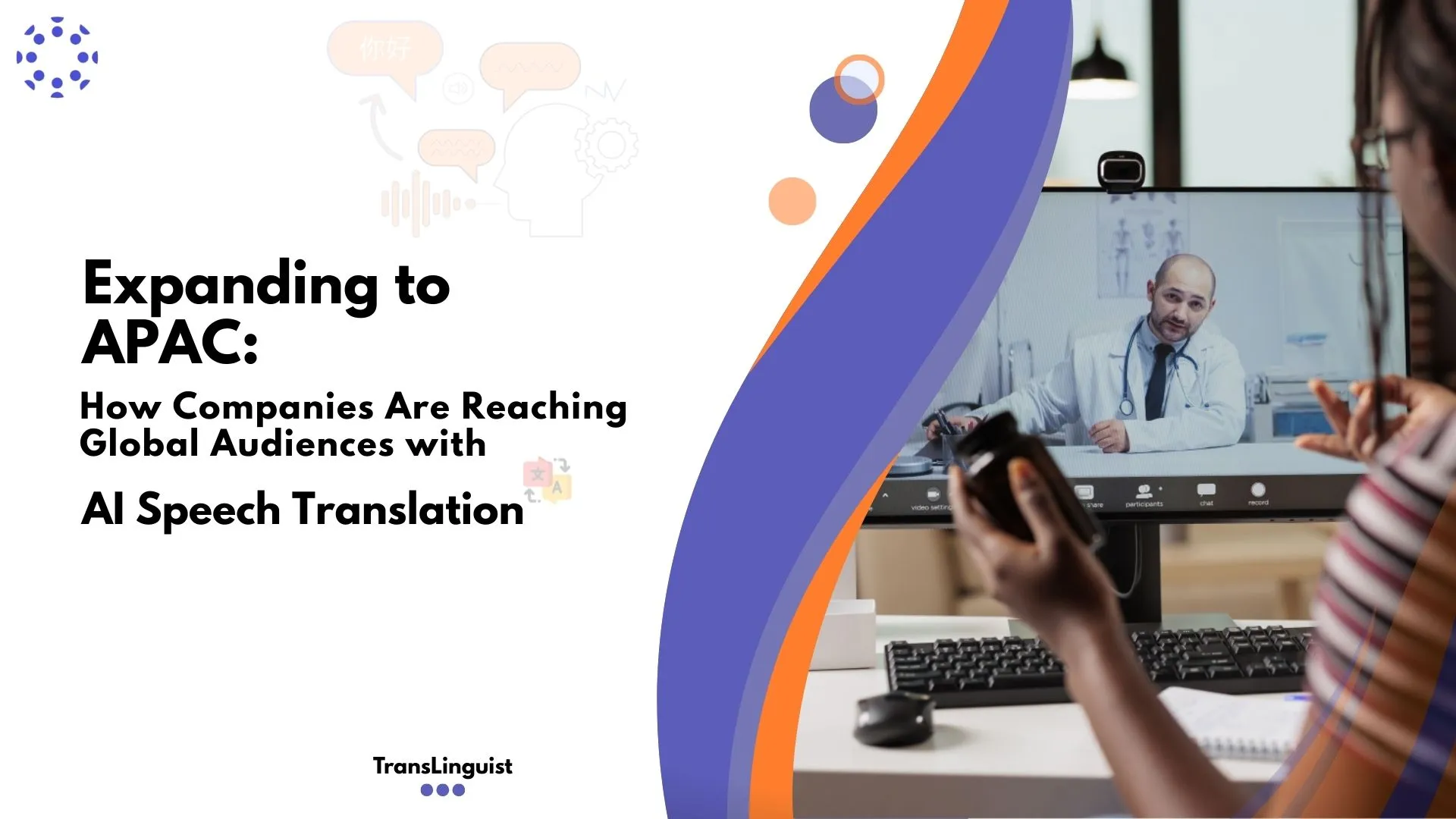The Asia-Pacific (APAC) region is a promising prospect for organizations whose aim is to develop globally. However, language is a barrier that practically every company entering the area must overcome. Communication is a challenge, and a significant one, given the numerous languages and dialects spoken in nations like China, Vietnam, Indonesia, the Philippines, Japan, and others.
Artificial Intelligence speech translation can help with that. In the last few years, this technology has grown much faster than anyone thought it would. AI speech translation has made it possible for businesses to talk to people all over the world in real time. This used to take weeks or teams of translators to finish. AI speech translation enables organisations to adapt, localise, and engage, whether it’s a leadership webinar, a product demo, or a customer service call.
Let’s take a look at how this is evolving in the Asia-Pacific, and why firms are investing so much in this.
Why the APAC Region Can’t Be Ignored
In a nutshell: There are more than 4.3 billion people in APAC, which is almost 60% of the world’s population. It is also one of the digital economies that is growing the fastest. Countries like the Philippines, Indonesia, and India are quickly getting more people online, but South Korea and Japan are leading the way in new technologies.
But here’s the catch—English isn’t the common thread. According to EF’s English Proficiency Index, many APAC countries fall into the “moderate” or “low” proficiency categories. Language becomes a significant obstacle for a company attempting to establish credibility, introduce a product, or clarify a complicated concept.
TransLinguist truly begins to shine at this point. By using TransLinguist, businesses can now instantly translate recorded content or live conversations into multiple languages, customised for each market, rather than depending on laborious manual translation
How Companies Are Actually Using It
Let’s discuss practical uses rather than merely catchphrases.
Southeast Asia is the latest expansion of a U.S.-based healthcare company. They incorporated AI speech tools into their virtual training programs rather than employing several interpreters. Onboarding for nurses and technicians in Vietnam and Indonesia was conducted in their native tongues, complete with subtitles and real-time voice translation.
In a similar vein, a well-known European edtech company translated whole video libraries into Mandarin, Hindi, and Tagalog using AI. Their APAC user base increased by more than 40% in just six months.
These are not isolated stories. More and more companies are using AI speech translation to:
- Localize e-learning modules
- Provide real-time multilingual customer service
- Host webinars with built-in translation
- Translate marketing content and ads across platforms
The intriguing thing is that a lot of them are fusing human editors with AI tools. In APAC, where tone and etiquette differ greatly between markets, this hybrid approach strikes a balance between speed and cultural accuracy.
Why a Human Touch Still Matters
To be clear, AI does not replace human linguists. Not yet, and perhaps never totally.
Although AI can swiftly interpret a wide range of speech, it occasionally mistranslates slang, sarcasm, or culturally sensitive phrases. As a result, firms frequently hire language experts to review AI output before it goes public.
TransLinguist, for example, promotes a hybrid method in which linguists and technology collaborate. This ensures that translations are not only accurate but also sensitive to the sensibilities of those in the target culture. This personal touch is especially significant in countries like Japan, where tone and formality are valued.
The Flip Side: Challenges and Things to Watch For
It’s not always easy to use AI speech translation, of course. A few points to remember:
- Clarity and Accents: AI models continue to struggle with quick speakers and strong regional accents.
- Noise Interference: Background noise may reduce accuracy.
- Data Privacy: Countries such as South Korea and Singapore have strict rules limiting the handling of voice data.
- Context Gaps: If AI is unable to understand industry-specific language, literal translations may miss the mark.
Therefore, it’s crucial to pick a provider like TransLinguist that is knowledgeable about both the technological and cultural landscape. They provide customised solutions that take privacy and performance into account.
What’s Coming Next
AI speech translation has a bright future. These days, we’re seeing AI voices that can recognise emotions, tools that maintain speaker tone during translations, and integrations with the metaverse and virtual reality (VR). Imagine holding a product launch in Singapore and delivering the announcement to each guest in their native tongue, as though you were speaking it yourself.
This technology will play an even greater role in how businesses conduct business globally as it develops further.
Why Now Is the Time to Invest in AI Speech Translation
Businesses that are able to communicate both literally and figuratively with their customers are the ones that succeed in the competition to expand internationally. The idea of AI speech translation is no longer futuristic. It is available, reasonably priced, and assists companies in establishing sincere connections in some of the most cutthroat marketplaces on the planet. Unmatched potential exists in the APAC region, and it’s now easier than ever to access with the correct resources.
Do you want to confidently go global? Break the language barrier and establish a real-time connection with your audience by using TransLinguist.
FAQs
To begin with, what is AI speech translation?
This technology translates spoken language between languages using artificial intelligence (AI). Among its common applications are content localisation, training, and real-time communication.
What significance does it have for Asia-Pacific markets?
APAC is home to a diverse set of languages and English skill levels. AI speech translation allows businesses and their various audiences to communicate more efficiently and transparently.
Am I limited to using AI tools?
Human review is still recommended for sensitive content or brand messaging, even though AI is great for speed and scale.
How much does it cost?
The majority of solutions can be scaled. Compared to hiring full-time translators, you don't need a huge budget to get started.



